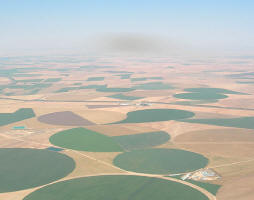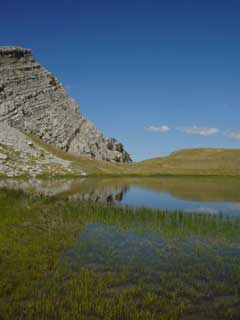 Saving the Dead Sea Could Mean Changing it Irrevocably
Saving the Dead Sea Could Mean Changing it Irrevocably
The World Bank approved a rescue plan to save the Dead Sea, which is drying up at a rate of about three feet annually, but environmental groups argue the plan will result in ecological disaster.
After a decade of debates, the World Bank confirmed in January the feasibility of building a canal between the Red Sea and the Dead Sea at a cost of $10 billion.
At the beginning of the 20th century, about 2 billion cubic meters of water per year would flow into the Dead Sea, much of it from the Jordan River. But, says Gidon Bromberg, director of Friends of the Earth Middle East, “Today 95 percent of this water is taken by Israel, Jordan, and Syria.”
Meirav Ayalon, spokeswoman for the Kibbutz Ein Gedi, says: “Once, the sea shoreline in Ein Gedi Spa bordered the road. Now, you have to [travel] half a mile to reach it.”
Friends of the Earth, Society for the protection of Nature in Israel, and even Israel’s Environmental Protection Ministry, say replenishing the Dead Sea with water from the Red Sea could have a bad effect.
The mixing of sulfate-rich Red Sea water with calcium-rich Dead Sea brine could result in gypsum precipitation. In other words, it could turn the Dead Sea a chalky white.
Phosphate from the Red Sea and dilution of the surface water could also cause a large outbreak of algal blooms.
“All studies have shown that the project will cause a huge ecological disaster as it produces a plaster layer and red algae,” Ayalon said.
The Dead Sea—the lowest place in the world, famous for its black mud pools and iconic photos of people floating in the highly salinized water—is a troubled body of water in a troubled region.
The canal project is lauded as a great feat of cooperation among Jordan, Israel, and Palestine. The joint effort is enthusiastically supported by Israel’s Ministry of Regional Cooperation.
It would include hydro-electricity power plants and the world’s largest desalination facility.
In 2005, the partners asked the World Bank to conduct a feasibility study on the plan, which they hoped would stabilize the water level of the Dead Sea and supply the region with drinking water and electricity.
For the past few decades Israel’s water supply has relied on Kinneret Lake (also known as the Sea of Galilee), north of the Dead Sea, for water. It is now becoming more dependent on desalinated water from the Mediterranean Sea. Bromberg suggests that more water be used from the Mediterranean to give Kinneret a chance to fully replenish.
Kinneret follows a natural course into the Dead Sea. If water levels rise in Kinneret, says Bromberg, they will help replenish the Dead Sea.
Bromberg also calls on the governments of Israel and Jordan to restrict corporate water use, which is depleting the Jordan River and thus the Dead Sea. He says the potash industry has no incentive to operate with less water.
“If Israel and Jordan will require the enterprises to pay for every cubic meter [of water] and monitor the amount of water consumed,” Bromberg says, the companies would develop alternative technology that would require less water.
He suggests a combination of desalinating water from the Mediterranean Sea, reusing treated water, and limiting corporate water use to ease the strain on the Dead Sea and let it replenish from its natural sources.
| Contact information |
Michal Bleibtreu Neeman, Epoch Times
|
|---|---|
| News type | Inbrief |
| File link |
http://www.theepochtimes.com/n3/17443-saving-the-dead-sea-could-mean-changing-it-irrevocably/ |
| Source of information | Epoch Times |
| Subject(s) | ENERGY , FINANCE-ECONOMY , HYDRAULICS - HYDROLOGY , INFRASTRUCTURES , METHTODOLOGY - STATISTICS - DECISION AID , NATURAL MEDIUM , POLICY-WATER POLICY AND WATER MANAGEMENT , PREVENTION AND NUISANCES POLLUTION , RISKS AND CLIMATOLOGY , WATER DEMAND |
| Geographical coverage | Israel, Jordan, Syria, Palestine |
| News date | 22/04/2013 |
| Working language(s) | FRENCH |
 you are not logged in
you are not logged in





